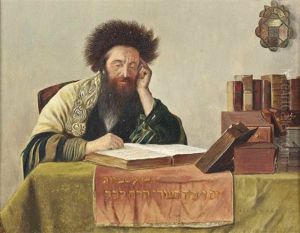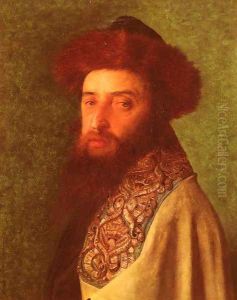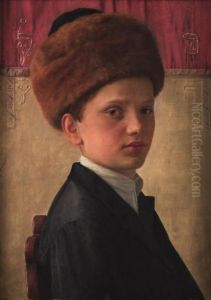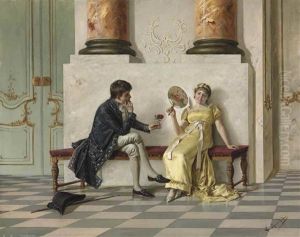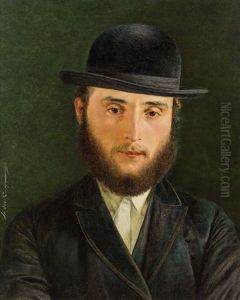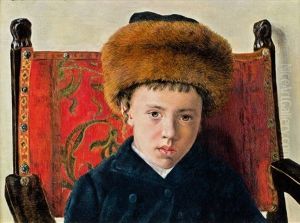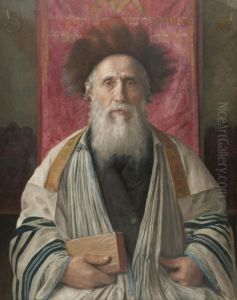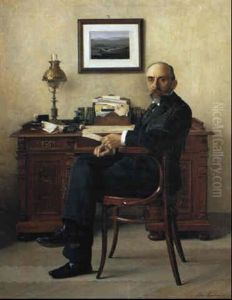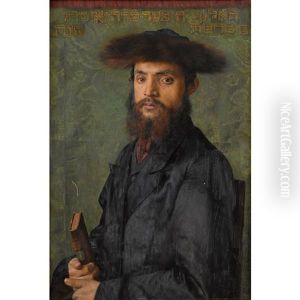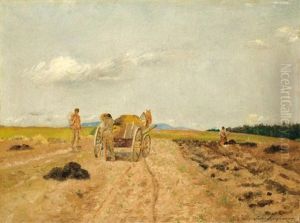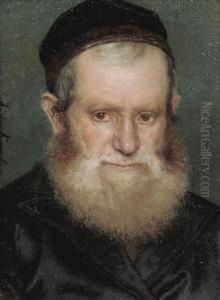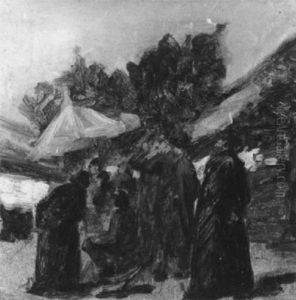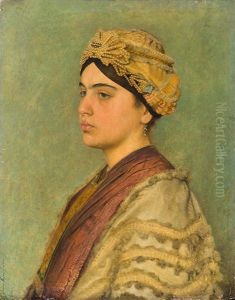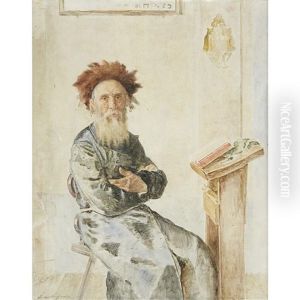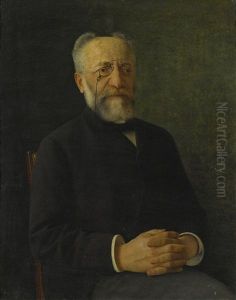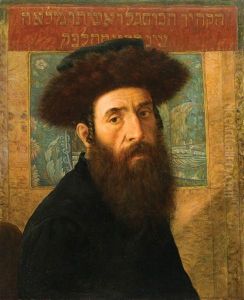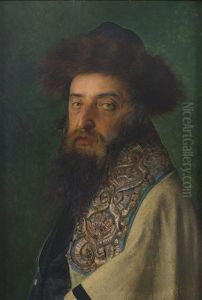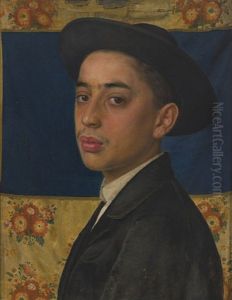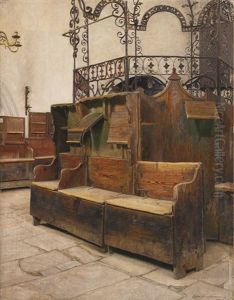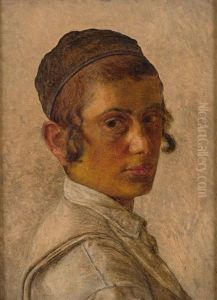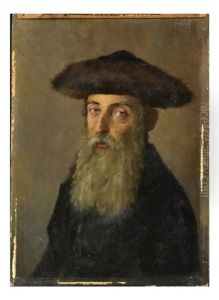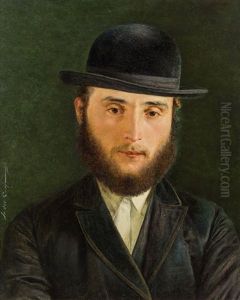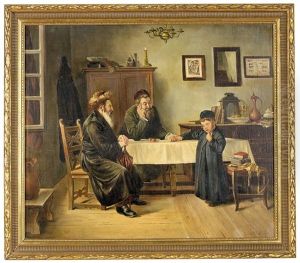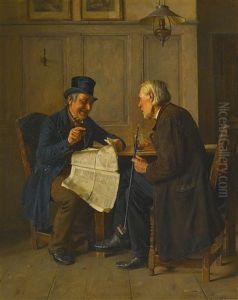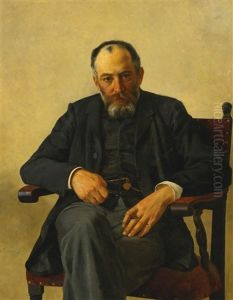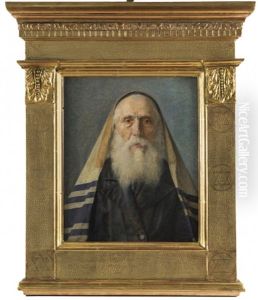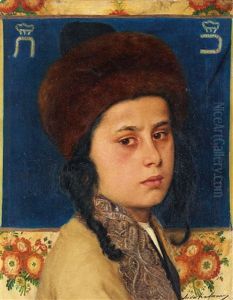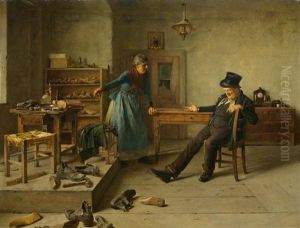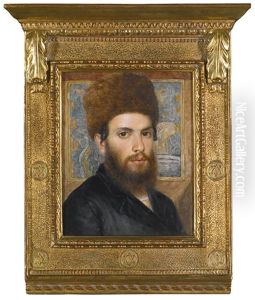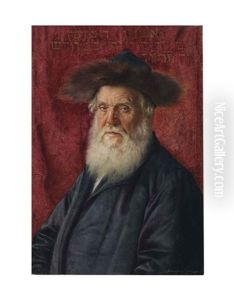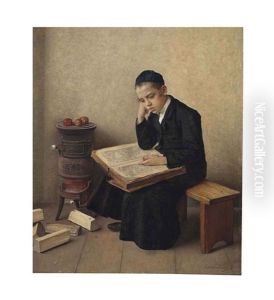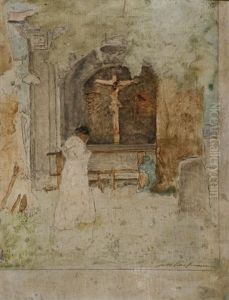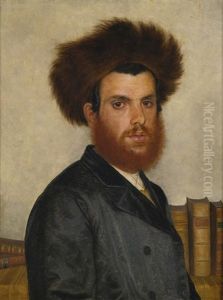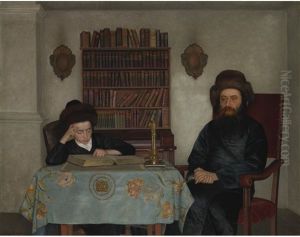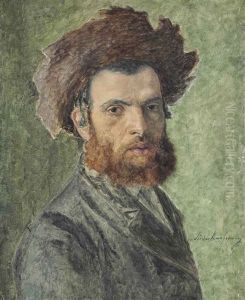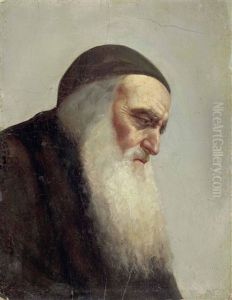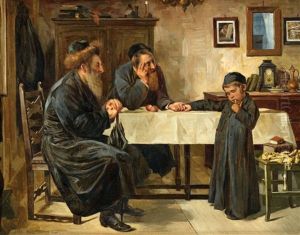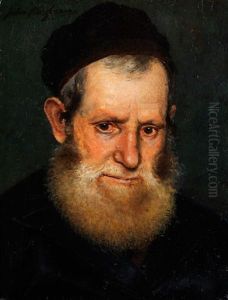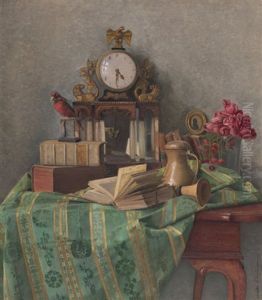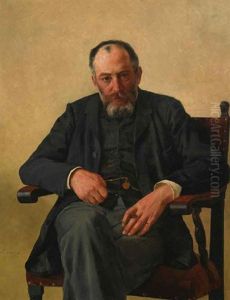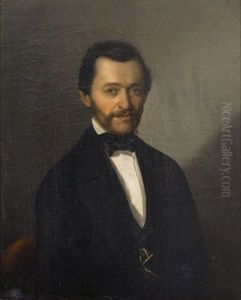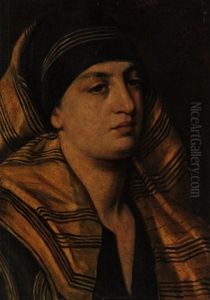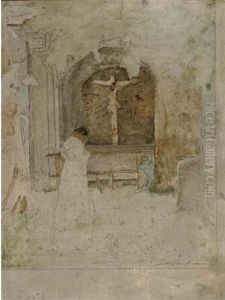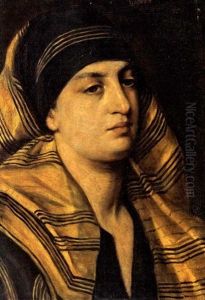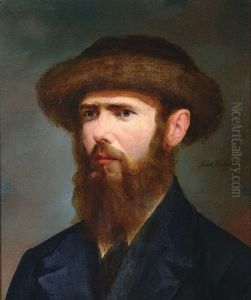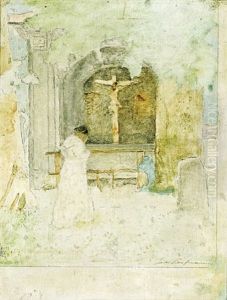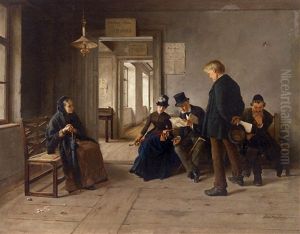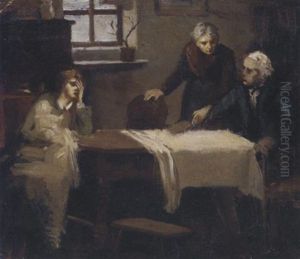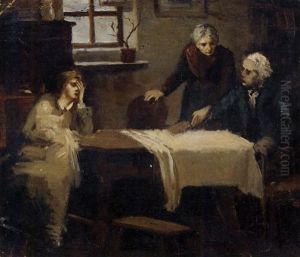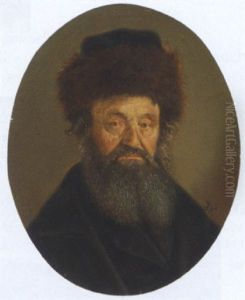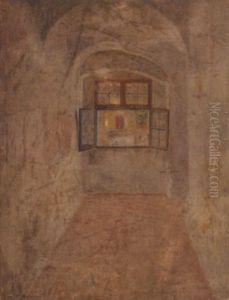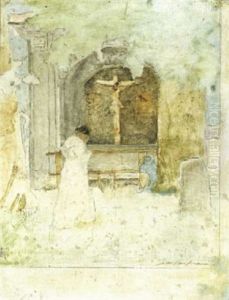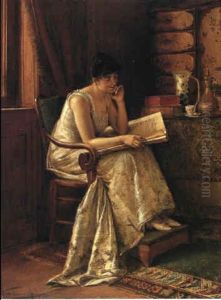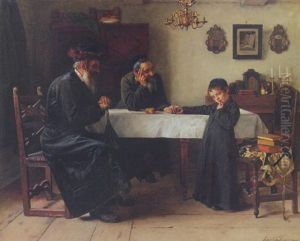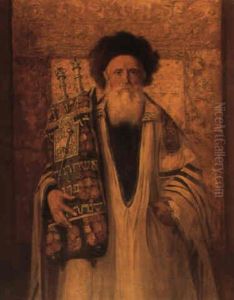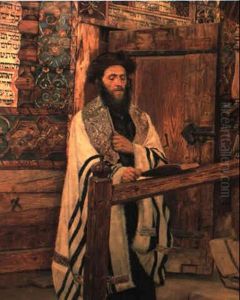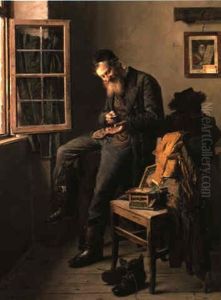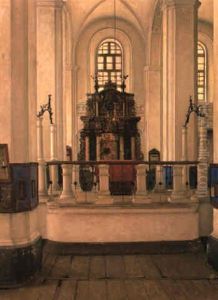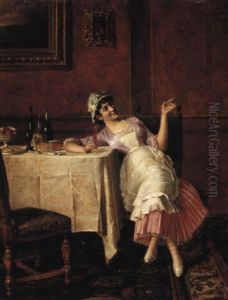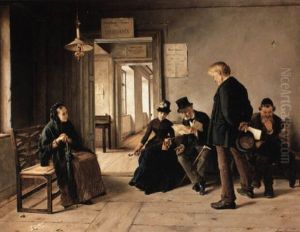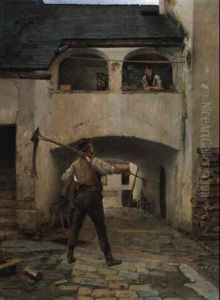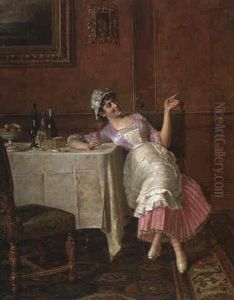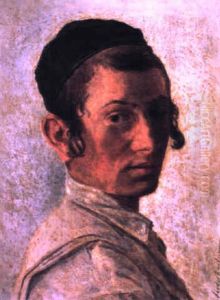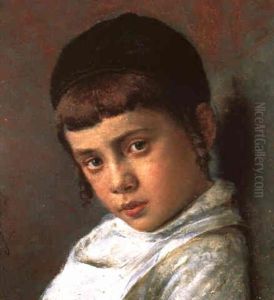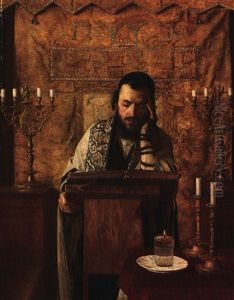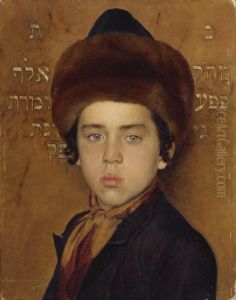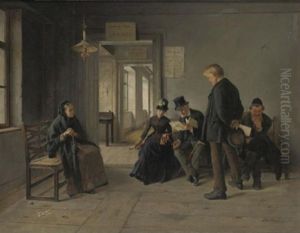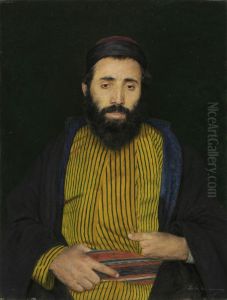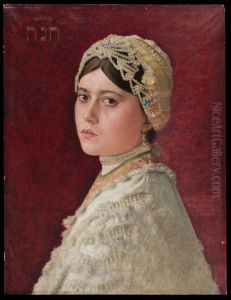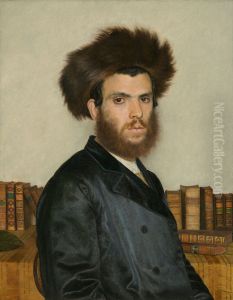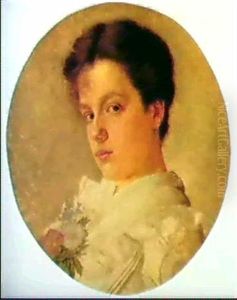Isidor Kaufmann Paintings
Isidor Kaufmann was an Austrian painter known for his masterful portrayal of Jewish life and customs in Eastern Europe during the late 19th and early 20th centuries. Born on March 22, 1853, in Arad, then part of the Austro-Hungarian Empire (now in Romania), Kaufmann showed an early interest in art. Despite his father's wishes for him to enter the business world, Kaufmann pursued his passion for painting and moved to Vienna, where he studied at the Academy of Fine Arts.
His academic training at the academy was under the guidance of Joseph Matthäus Aigner and August Eisenmenger, which equipped him with the technical skills that would later define his meticulously detailed work. Kaufmann's initial focus was on genre painting and portraiture. However, after settling in Vienna, he became increasingly interested in the daily lives and religious practices of Eastern European Jews. This shift in focus was largely influenced by the growing interest in ethnographic and regional subjects among artists and intellectuals of the time.
Kaufmann's work stands out for its empathetic depiction of the shtetl life, a term used for small towns with large Jewish populations in Central and Eastern Europe. His paintings often featured rabbis, scholars, and ordinary Jewish people captured in moments of prayer, study, and contemplation, set against the backdrop of synagogues or modest interiors. These works were painted with a sense of realism and attention to detail, including the use of Hebrew inscriptions and accurate representations of religious artifacts, which reflected his deep respect and understanding of Jewish culture.
His art gained considerable acclaim during his lifetime, with Kaufmann exhibiting at the Künstlerhaus and the Secession in Vienna, as well as internationally. Despite the popularity of his work, Kaufmann chose to stay out of the public eye, leading a quiet and dedicated life to his art. He did not align himself with any particular artistic movement or style, but his paintings have been associated with the Realist tradition.
Isidor Kaufmann's legacy is that of a unique chronicler of Jewish life in Eastern Europe, whose work provides a valuable historical insight into a world that would be greatly diminished by the events of the 20th century. His paintings continue to be admired for their quiet dignity, technical excellence, and cultural significance. Kaufmann passed away on November 25, 1921, in Vienna, leaving behind a body of work that continues to be celebrated in museums and collections around the world.
